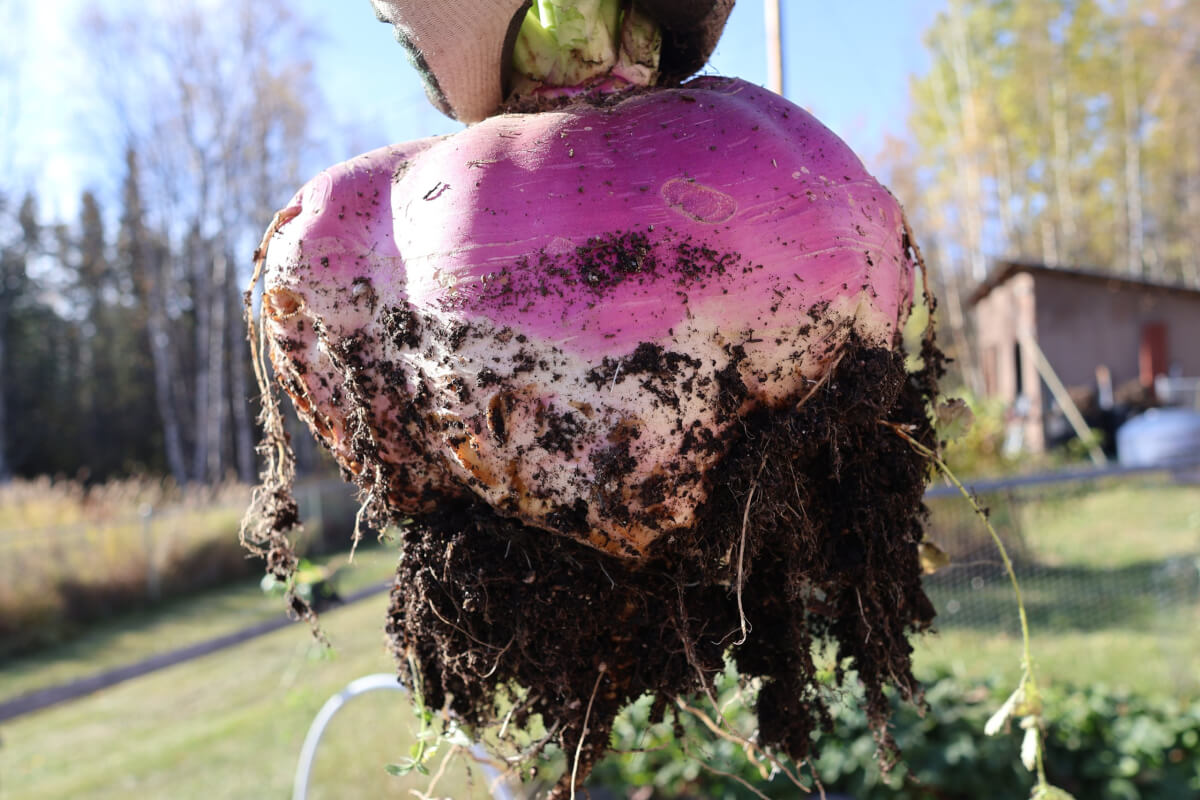When people think about growing root veggies, usually they think of things like carrots, radish or beets. On the more obscure front, you have this odd veggie called a Rutabaga!
Rutabaga and turnips are closely intertwined. Essentially, Rutabaga is a turnip that’s been crossed with a cabbage. Typically grown for its fleshy root, as you might expect, the greens of a Rutabaga can also be eaten as well. Both turnip and rutabaga are far more popular in European cultures, but they do have a passionate following by many US growers as well.
Its lesser popularity among gardeners is likely related to its history as a food of last resort during the food shortages of World War I and World War II. The famines in Germany and France had desperate people boiling turnips in water as their only food source, leaving many of this generation to despise this vegetable for the rest of their lives.
The veggie has lots of different names, such as Swede, Neep and Swedish turnip or sometimes yellow turnip. Scottish people even use the name “turnshie,” which has a dual purpose of being both a Rutabaga and an insult for foolish people. The name Rutabaga is Swedish in origin, basically meaning “root lump.”
In Alaska, the Rutabaga can get quite large. We often see one or more of ours get to ginormous proportion. This guy probably weighed in at over five pounds. We usually preserve ours using blanch and freeze techniques, allowing 9-12 months of storage in the freezer.
Rutabaga and turnips can be mashed, similar to potatoes, and served as a side dish. A slightly more obscure preparation is Swedish Rotmos (root mash), where cooked rutabaga and carrot are mashed together and combined with butter and cream. We often include them in soups, stews and as an alternative for potatoes.


